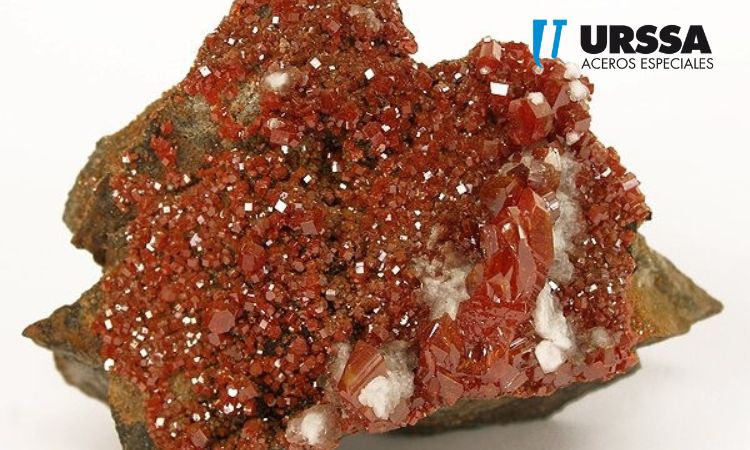
Vanadium steel
What is Vanadium?
It is a silvery white metal of medium hardness. It rarely exists as a free element in nature, but can be found in a combined state in nearly 65 different minerals, including magnetite, vanadinite, carnotite, and patronite, as well as in coal, oil, and phosphate rock deposits.
Vanadium Properties
This lesser-known metal has properties such as good structural strength, malleability, ductility, natural corrosion resistance, and stability against alkalis, acids, and salt water, making it extremely valuable in manufacturing. It also exhibits very colorful and varied oxidation states.
It is also known as the plastics of the 21st century, as it creates ultra-lightweight, ultra-high-strength alloys.
Vanadium Applications
The most significant use of this material is to create specialized steel alloys. It is alloyed with steel and iron for high-speed tool steel, high-strength low-alloy steel, spring steel, and wear-resistant cast iron. The addition of vanadium to steels removes occluded oxygen and nitrogen, thus improving the strength of materials. About 80 percent of the material produced worldwide is alloyed with iron to create a shock- and corrosion-resistant steel additive called ferrovanadium. Ferrovanadium consists of between 1 and 6 percent vanadium. Loaded with this additive, vanadium steel alloys are used to make tough tools and components, such as circular saws, drill bits, automotive gears, axles, armor plates, springs, cutting tools, connecting rods, and crankshafts. This is because vanadium steel maintains its hardness at high temperatures, allowing it to be used for moving parts that produce high levels of heat.
When mixed with aluminum and titanium, it produces a strong alloy that is used for applications such as dental implants and jet engines. These alloys are also used to make nuclear reactors as they have low neutron absorption properties.
Vanadium compounds have various commercial uses. Vanadium pentoxide is used as a mordant (helping to permanently fix dyes to fabrics), as a catalyst in chemical reactions, and in the manufacture of ceramics. Vanadium compounds are also used as catalysts in the manufacture of sulfuric acid and polyamides such as nylon, and in the oxidation of various organic compounds such as ethanol to acetaldehyde and sugar to oxalic acid, among others.
